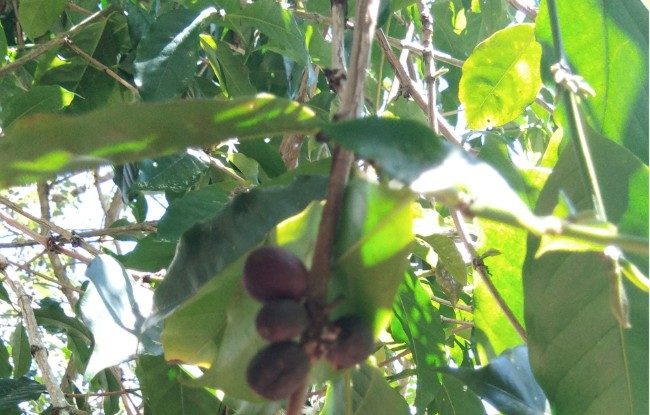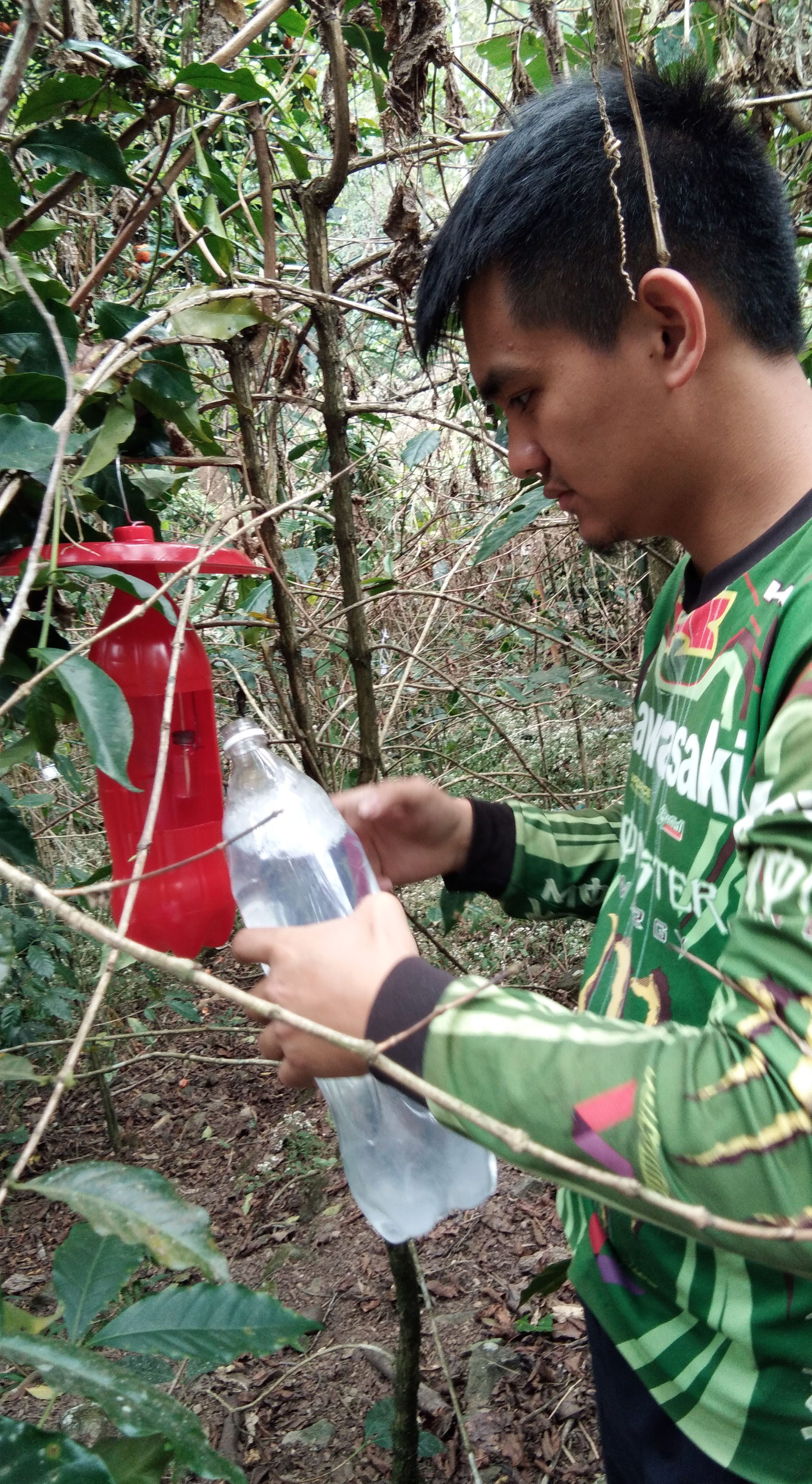SUMMARY
This is AI generated summarization, which may have errors. For context, always refer to the full article.

This is a press release from the University Public Affairs Office of Benguet State University
For his undergraduate thesis, Jimmer John Bisaya, who was then majoring in Entomology at Benguet State University (BSU), built and studied a lure trap for coffee berry borers (CBBs) – one-millimeter long pests that reduce harvest.
Bisaya, with adviser Dr Bonnie Ligat, conducted the study titled, “Pre-emptive Management Approach of Coffee Berry Borer (Hypothenemushampei Ferrari) in Arabica Coffee (Coffea arabica Linnaeus) in Atok, Benguet” at the one-hectare coffee plantation of the Atiw and Mayos families in Sayet.
“CBBs penetrate coffee beans, lay their eggs inside to cause the coffee berries to dry, turn black, and eventually fall. There is infestation in Sayet, Caliking, Atok, and even in Longlong, La Trinidad,” he explained in Ilocano.
Since the coffee at the plantation was grown organically, pesticides were out of the question and considered impractical.

“CBBs are small so spraying would only risk getting the coffee berries contaminated, all while failing to reach the CBBs because they are inside the coffee berries. It will only be a waste of pesticide and an additional cost for the farmers,” Bisaya said.
CBBs are active all throughout the year. Thus, Bisaya emphasized the importance of sanitation. He explained that the pests continue living in the fallen coffee berries and in host plants, waiting for new plants to emerge. Getting rid of CBB-infested beans immediately will greatly reduce the chances of re-infestation.
The lure traps, on the other hand, will take care of any remaining CBBs after the infested beans have been cleared and taken away. The lure trap Bisaya built was based on a design published by the University of Hawaii at Manoa, College of Tropical Agriculture and Human Resources. The Hawaiian design utilizes a 2-liter capacity plastic bottle, lure bottle, galvanized wire, methanol, ethanol, and soapy water.
Bisaya innovated the Hawaiian lure trap to fit the conditions in Atok. A plastic plate was added to prevent rainwater from diluting the solution inside the lure trap, and instead of a polyethylene lure bottle, a vial that had been pricked with a barbecue stick was used.
To make the lure trap, a 4×4 square-inch window is cut in the plastic bottle, 10 centimeters (cm) away from its bottom to serve as the entrance of the insects. A hole is made in the plastic bottle cap and a 38.1 cm wire is inserted and tied at the neck of a vial containing a mixture of 3 parts methanol and one part ethanol to imitate the smell of rotting coffee berries.
The cover of the vial is pricked with a 7-cm maboo barbecue stick made of bamboo to let the odor out. The other end of the wire serves as the handle of the trap. The trap is then hung on coffee tree branches 10.16 cm above the ground.
At the bottom of the bottle is a 75-ml powdered soap solution meant to drown the pests. Bisaya cautioned that powdered soap with strong odors such as those with fabric conditioners can’t be used, since it will interfere with the odor of the methanol-ethanol mixture. A plastic plate with a diameter of 22.86 cm is attached on top of the bottle to avoid rainwater from diluting the solution. The plastic bottle and plastic plate are spray-painted red to imitate the color of coffee berries.
In the case of the Atiw and Mayos plantations, Bisaya monitored that the highest population of CBBs caught in the different lure traps were recorded in March until the first week of April, when most of the coffee berries were harvested. March and April are the stages of the dearth period where no berries are harvested. This shows that setting up of lure traps in March to May when there are no berries can reduce the pest population.
Results of Bisaya’s study also worked on the findings of a previous study of BSU alumnae Nora Hill Evasco, who implemented lure-traps as well.
“In the study of Nora Hill, she tried to find out how many lure traps should be used for 25 trees. In my study, I covered 50 trees. Based on the results, 4 lure traps are recommended for 50 trees,” Bisaya said.
Bisaya is now a research assistant at BSU-Cordillera Organic Agriculture Regional Development Center (COARDC) and is willing to share his knowledge in making CBB lure traps. – Rappler.com
Add a comment
How does this make you feel?
There are no comments yet. Add your comment to start the conversation.